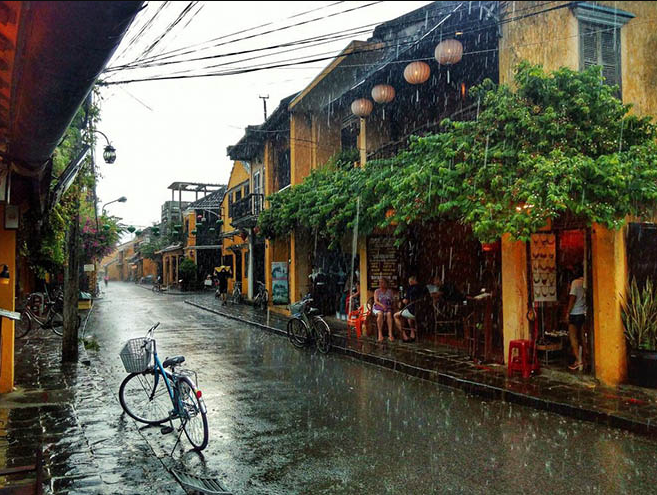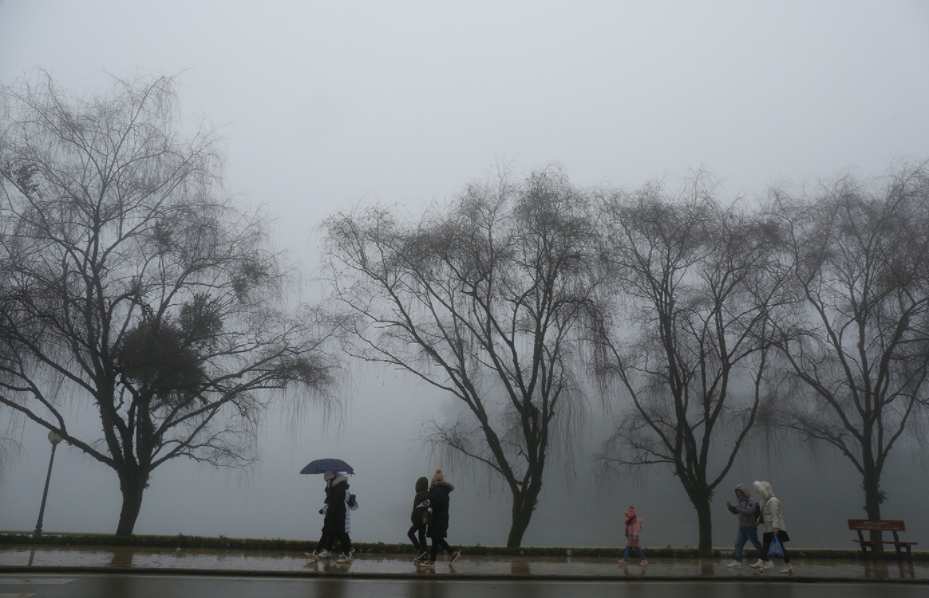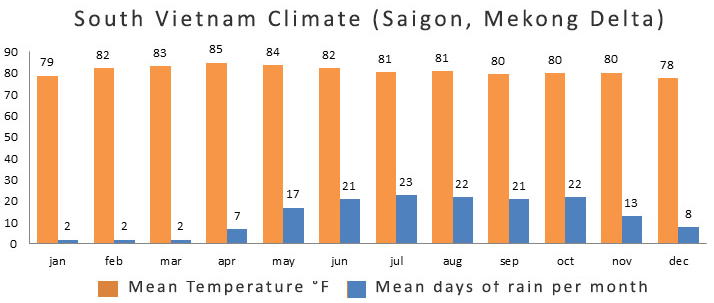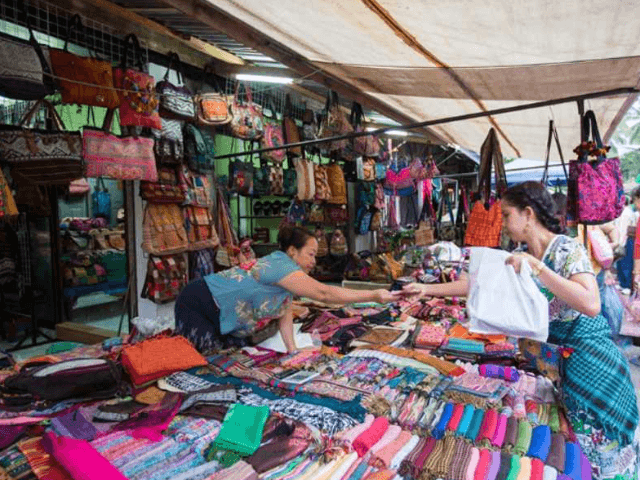The monsoon in Vietnam has a major impact on climate and weather. It affects every aspect of life, from agriculture to various economic sectors, including tourism. Should we visit Vietnam during the monsoon season? Threeland will answer this question
TABLE OF CONTENTS
1
1. The monsoon season in Vietnam
2
2. Should you travel to Vietnam in the monsoon season?
3
3. Benefits of visiting during the Monsoon in Vietnam
The monsoon in Vietnam has a major impact on climate and weather. It affects every aspect of life, from agriculture to various economic sectors, including tourism. Should we visit Vietnam during the monsoon season? Threeland will answer this question.
Vietnam has the largest horizontal breadth 307.7 miles ( about 500 km). It reaches 1,025 miles north-to-south ( about 1,650 km), while its shoreline is 2,140 miles long ( about 3,444 km). Furthermore, because Vietnam is located in the intrinsic zone of the Northern Hemisphere, the climate is tropical. Because of this, the wind effect is active all year. Furthermore, the weather varies by location from north to south and east to west due to monsoon impacts and the country's physical characteristics.
Climate and monsoon season in Vietnam
1. The monsoon season in Vietnam
Monsoon is a type of seasonal wind that changes direction. In Vietnam, the monsoon season is separated into two different wind seasons: the summer monsoon (southwest monsoon) and the winter monsoon (northeast monsoon)
Summer monsoon.
The summer monsoon season in Vietnam lasts from May to October, with two winds flowing in the same southwest direction.
The first part of summer (May – July)
The tropical mass of the Bay of Bengal moves southwest and enters straight into Vietnam, bringing severe rains in the Southern Delta and Central Highlands. Following that, this air mass passes the Truong Son range, creating a dry and hot climate on the coastal plains of the central and southern Northwest region.
The influence of southwest monsoon in Vietnam
The second half of summer (July - October)
The southwest monsoon (originating from a near-tropical air mass within the southern hemisphere) is active. Crossing the tropical sea, the air gets hot and humid, causing heavy rain in the wind-receiving areas of Vietnam's South and Central Highlands. Thanks to the low pressure in the north, the atmospheric mass flows from the southeast to the north, leading to the southeast monsoon that happens in North Vietnam in the summer.
Winter monsoon in Vietnam
We generally associate monsoons with rain, but this is not the case with the monsoon in Vietnam. The winter monsoon operates from November to April of the next year, flowing northeast, thus the name northeast monsoon. The northeast monsoon extends from North Vietnam to the country's central Bach Ma range.
.png)
The influence of northeast monsoon in Vietnam
On the central coast, the wind from the sea blows strongly to the northeast causing rain in the area.
Moving south, the wind weakens and is less cold. Thus, South Vietnam and also the Central Highlands are available in dry seasons.
In the first half of winter (October - December): cold and dry. The wind brings a cold and prolonged winter to the North.
The last half of the northeast monsoon in Vietnam (January - March): cold and humid, with drizzling rain along with the coastal areas and the North and Central.
2. Should you travel to Vietnam in the monsoon season?
Vietnam is divided into three regions: the North, the Central, and the South. Each region has distinct geographical, meteorological, and climate characteristics.
Northern Vietnam
Famous tourist destinations: Hanoi, Ha Long Bay, Ninh Binh, Moc Chau (Son La), Sapa (Lao Cai), Mu Cang Chai (Yen Bai), Tam Dao (Vinh Phuc), and Mau Son (Lang Son).
From April to October, the weather and climate in these places will be hot and rainy, with an average humidity of more than 80%. July and August are the wettest months with the most rainfall.
Due to the Northeast monsoon in Vietnam, the winter will be cold and dry, from December through January. The northern mountainous region of Vietnam gets the coldest weather in comparison to the rest of the country. The average temperature is 15 degrees Celsius (59 degrees Fahrenheit), with the lowest point being 5 degrees Celsius (41 Fahrenheit). Heavy mists may also be found in several areas, resulting in poor visibility (Sa Pa, Lai Chau, Moc Chau...). On the other hand, the landscapes are so dreamy and gorgeous that you want to go sightseeing.
Mist and drizzle in Sapa caused by the northeast monsoon in Vietnam
The best time to visit northern Vietnam is in the spring and autumn. It's from March to April and September to November. At this time, it's mostly sunny and warm.
Central Vietnam
.png)
Because the high mountains in the west prevent the southwest monsoons from bringing rain to the area, the character of the monsoon in Vietnam differs. From April to early September, the region receives less rainfall than other parts of the country. Along with that, this place also reached the hottest threshold in the country. Summer temperatures here are the highest in the country. The peak of the heat is above 40 degrees Celsius.
Rainfall in this region reaches its peak between September and November. This region is frequently flooded around this time.
The view of Hoi An on a sunny day
The ideal time to visit Central Vietnam is between February and March in the North (Quang Binh, Hue, Quang Tri) and February to April in the South ( Nha Trang, Ninh Thuan, Hoi An). There isn't much rain or heat at this time of year, so it's perfect for exploring.
Central Highlands (including Dalat, Kontum, Dak Lak, …) is a nice place for people who like warm mountains. You can visit there from September to April when the southwest Monsoon in Vietnam stops affecting the area.
%20(1).png)
Dalat is a popular destination in Central Highlands
Southern Vietnam
Southern Vietnam has two different seasons: rainy and dry. The temperature does not vary greatly throughout the year, averaging 25 to 35 degrees Celsius.
From November until April is the dry season. As the southwest monsoon in Vietnam approaches, temperatures can reach 36 degrees Celsius.
May to October is the rainy season. June and July are the wettest months, with rain falling practically every day. However, unlike the rain in the North, notably the sprinkling and drizzling, rain in the South is heavy but short-lived.
Southern Vietnam weather and climate
3. Benefits of visiting during the Monsoon in Vietnam
Most people feel that traveling during the monsoon season is a bad idea. However, there are some advantages that you should know!
You will enjoy better service when there are fewer visitors. Discounts from tour companies, hotels, and restaurants are occasionally available. Furthermore, there are lower rates for lodging, transportation, and leisure activities.
Vietnam has a wide range of climates. Because of the monsoon in Vietnam, you may encounter a wide range of weather conditions. Visiting this beautiful tropical nation during the cold season is a treat for those who can't stand the heat or vice versa.
The monsoon in Vietnam affects the journey. However, there's no bad time in the year to visit Vietnam because of its diverse climates. Threeland is pleased to help you in planning your ideal trip to Vietnam. We like assisting you in picking the greatest places, hotels, and activities for your needs.
READ MORE:
1. Wonderful one week in Vietnam itinerary: Exploring Northern of Vietnam
2. "Fire-breathing" Dragon Bridge in Vietnam - Da Nang Travel Tips
3. Top the 5 best things to do in Sapa, Vietnam
4. Navigate top 10 famous bays in Vietnam can’t be lack in your Vietnam tour














